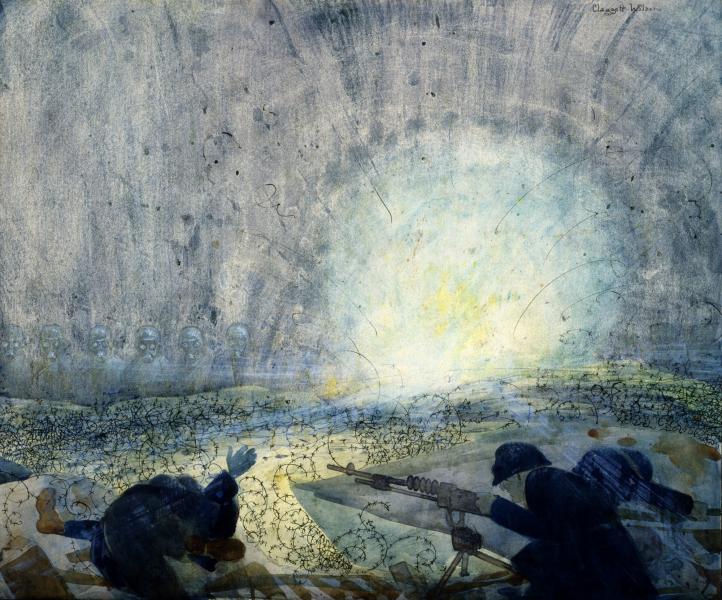Veterans Day has lost its sting.
The seismic shock of World War I reverberated through American art and culture in ways forgotten now. Yet every generation needs to stare into the chasm between the cataclysm’s ambition—”the War to end all wars”—and its harrowing reality. Forgetful people embrace the illusion that this time, this battlefield, this clash of arms—especially one waged by proxy with someone else’s blood—will be the one to make the lion drop at the foot of the lamb.
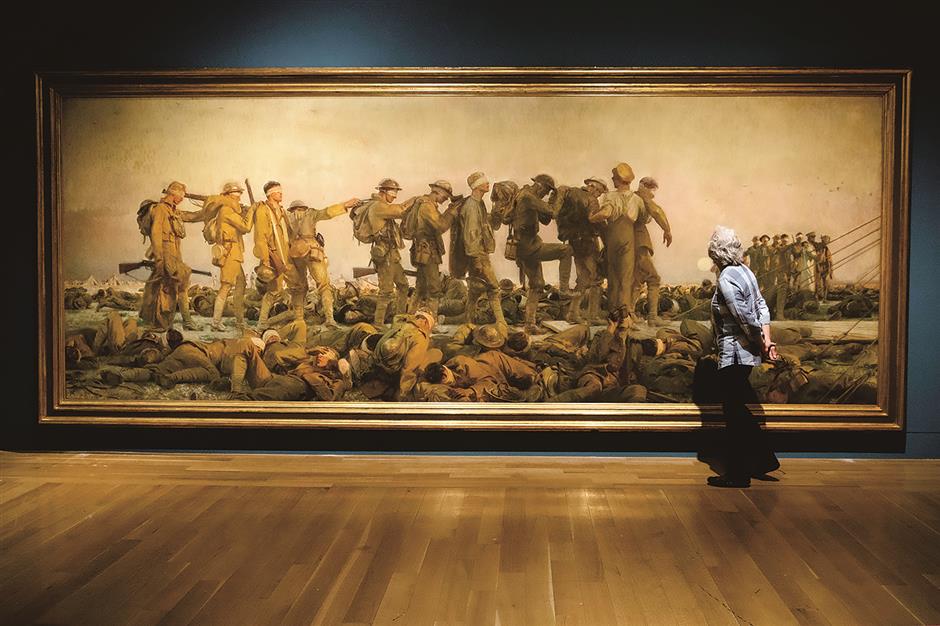
Veterans Day brings to mind John Singer Sargent’s Gassed (1918-19), an anguished glimpse of the human cost of that enduring deception. Begin with this pencil study for the final painting. Owned by London’s Imperial War Museum, the monumental painting was on loan to the Huntington Museum in 2014. It was an opportunity for the Huntington Library to display a preparatory drawing in its own collection.
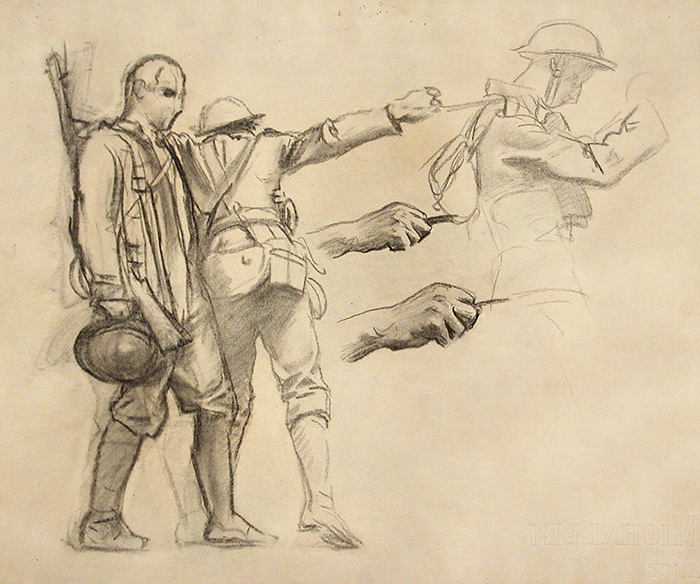
Susan Turner-Lowe described the work:
The study shows two soldiers together: one appears to be doubling over or stumbling from the effects of mustard gas exposure as the other man holds him up with one arm. In the final 7.5-by-20-foot painting, the men depicted in the study are in a line of injured soldiers, their eyes bandaged after being blinded by gas. Led by orderlies, they make their way forward while holding on to one another. In the foreground lie dozens of dead and wounded soldiers. These images are in stark contrast to the background, where an almost imperceptible group of uninjured soldiers play soccer as the ravages of war are so close at hand.
The British War Memorials Committee of the British Ministry of Information commissioned Sargent to document the war showing Anglo-American cooperation. In July 1918, the artist visited the Western Front to spend time with British and American troops. A recent New York Times article mentioned that Sargent “originally envisioned painting a homage to gallantry. But in France, he visited a field hospital crowded with soldiers who had been exposed to mustard gas, a poison that burned the body inside and out.” The experience in August 1918 so affected Sargent that he immediately changed the theme of the commissioned work.
Fellow artist Henry Tonks had travelled to France with Sargent. Recalling the event later in a 1920 letter (and quoted in the Imperial War Museum’s label for Gassed), Tonks wrote, “After tea we heard that on the Doullens Road at the Corps dressing station at le Bac-du-sud there were a good many gassed cases, so we went there. The dressing station was situated on the road and consisted of a number of huts and a few tents. Gassed cases kept coming in, lead along in parties of about six just as Sargent has depicted them, by an orderly. They sat or lay down on the grass, there must have been several hundred, evidently suffering a great deal, chiefly from their eyes which were covered up by a piece of lint. Sargent was very struck by the scene and immediately made a lot of notes.”
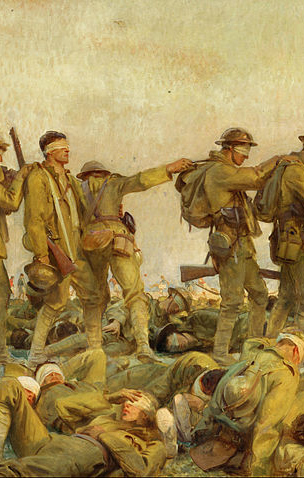
• • • • •
Veterans Day began in 1926 as Armistice Day. Congress declared that the “recurring anniversary of November 11, 1918, should be commemorated with thanksgiving and prayer and exercises designed to perpetuate peace between nations.” In 1938, Armistice Day became a federal holiday. Military.com adds:
As we all know, the “War to End All Wars” didn’t actually end all wars — or any wars. It actually led very directly to the next war, World War II. Which led to the next war, the Korean War, which was part of a greater war, the Cold War. You get the point. By the time the Korean War ended, there was a whole new generation of war veterans who felt deserving of recognition for a job well done.
Veterans of those wars lobbied Congress to change Armistice Day to Veterans Day in 1954, in order to honor veterans of every war. Congress agreed, and President Dwight Eisenhower signed on to it, too.
• • • • •
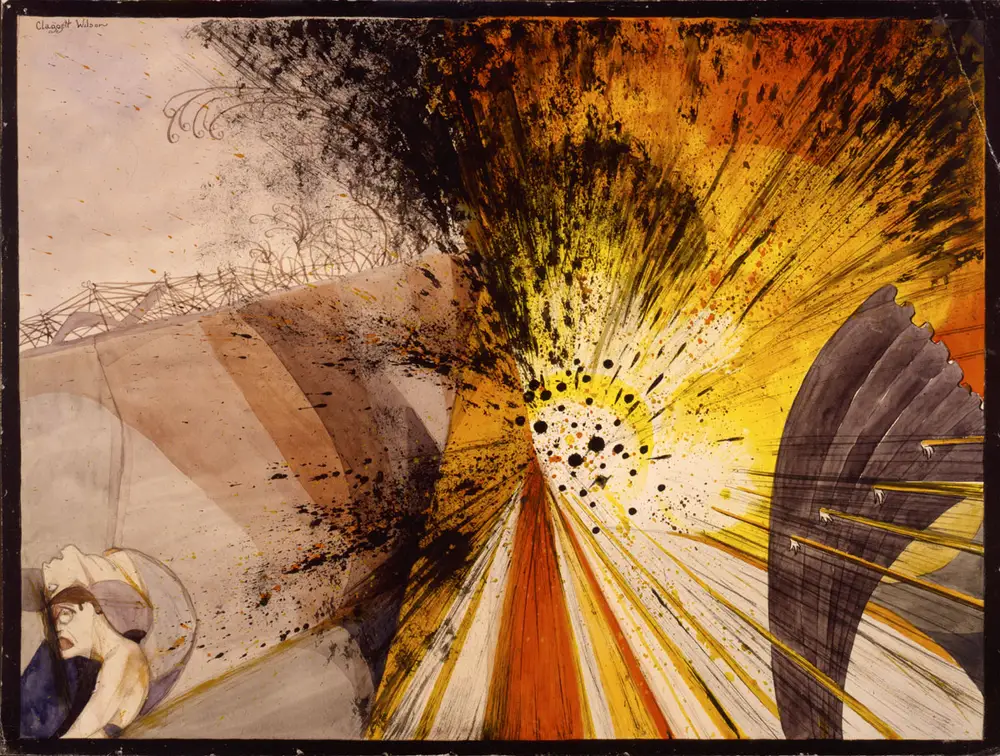
Claggett Wilson won his first commission in the trenches of Verdun. He was wounded twice, and suffered the effects of mustard gas. He was awarded the Navy Cross, the Silver Star, the Croix de Guerre. (Fluent in French, he served in France as aide-de-camp to Major General Wendell Neville, one of the most decorated Marines in the history of the corps.) An artist before the war and afterward, Wilson had an impressive career. One of the early Modernists, he exhibited at Knoedler in New York and the Paris Salon. His suite of War Paintings earned him recommendation for a Nobel Prize.
Today his work is barely known. Owned by the Smithsonian, it has not been on view—as best I know—for years. Like much else, it has been eclipsed by art produced, funded, and publicized for Right Now. The Great War has faded from historical memory and so much of the art that gripped its times has dwindled with it.
The art of those years serves as a prompt to living memory. Wilson’s delicate watercolor renderings of a dark subject point us to the reaches of suffering that our veterans know more keenly than anyone else.
• • • • •
Back in August, on Transfiguration Sunday, a priest at a local Dominican-run parish bellowed from the pulpit, “Putin is a war criminal!” In context, it was a simplistic war-mongering yawp from the safety of a suburban altar far from Ukraine. Listening, I thought immediately of the introduction to Paul Fussell’s The Great War and Modern Memory. A brilliant historian of the killing power of modern warfare, Fussell had been on his way to an academic conference in Germany in the late 1970s. The title of the conference was “War Enthusiasm in 1914″—a romanticized reaction to war that Fussell detested.
Fussell himself carried a piece of shrapnel in his thigh from the Battle of the Bulge. It left him with a tragic sense of men in uniform—combat veterans—being both agents of war and victims of it fully as much as the men they killed
I regret not having sent this facile, soft-headed priest a copy of Fussell’s gripping, landmark study of war.
